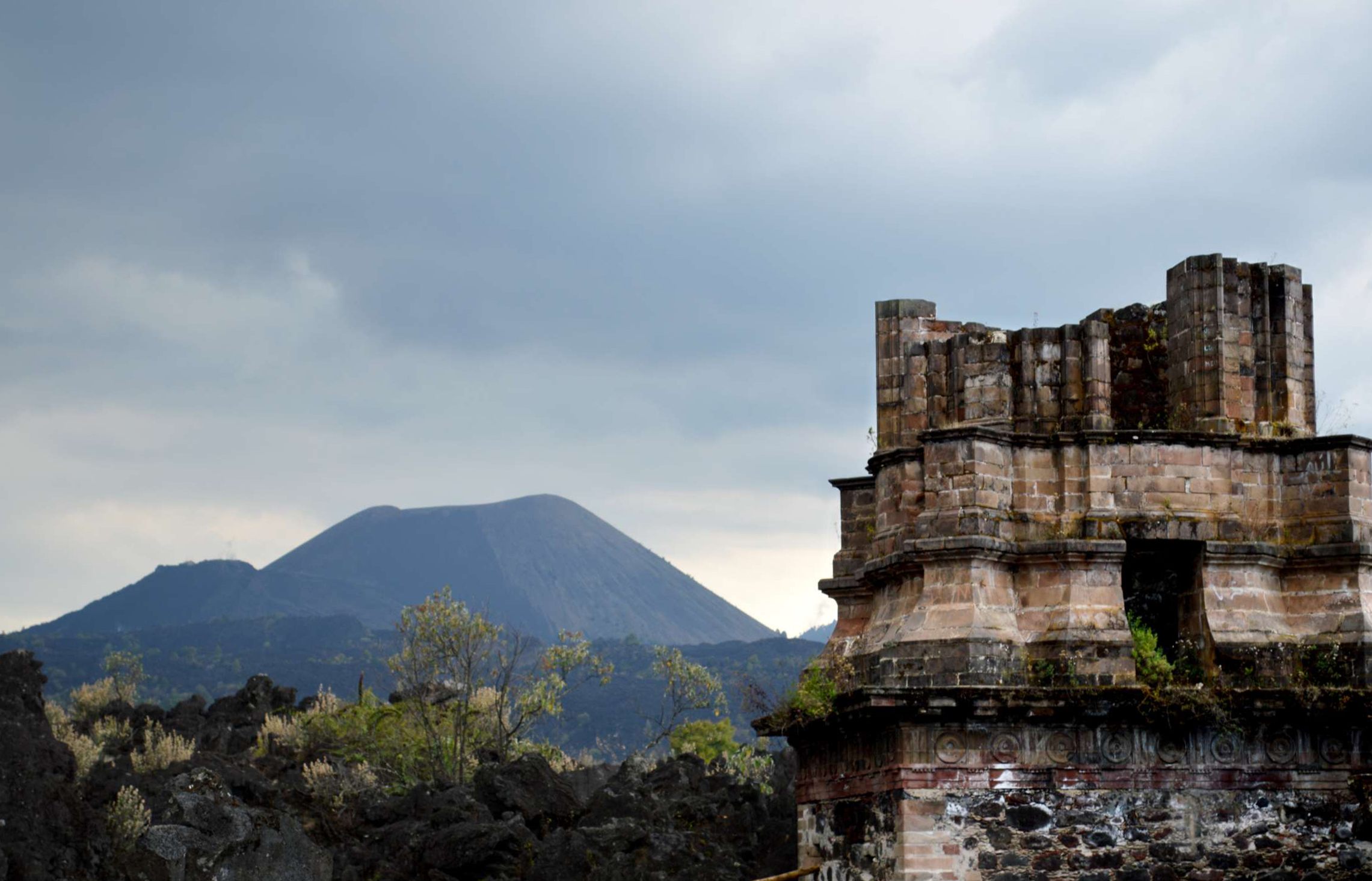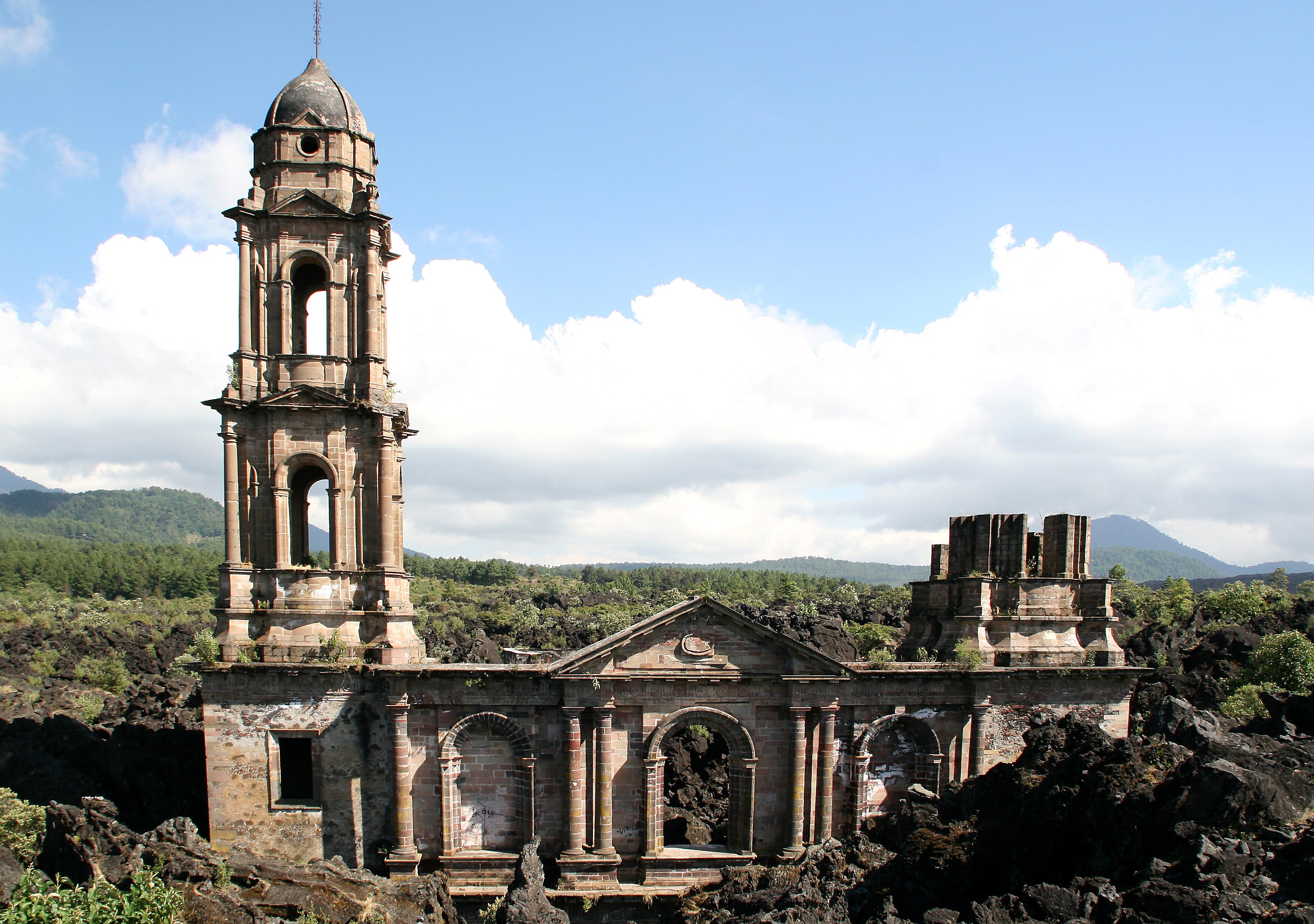What It Was Like To See A Volcano Being Born

The cinder cone soon after its birth in 1943 in a Mexican cornfield. (Photo: Public Domain/WikiCommons)
Dionisio Pulido had a farm. And on this farm there was a hole. He didn’t think much of it until, one afternoon, it changed his life and gave the whole world a peek at something it had never seen before.
The hole, about 15 feet wide and three feet deep, sat in a field on his farm, a parcel of land called Llano de Cuiyusuru near Paricutin, Mexico. Many of the locals assumed it was the entrance to an old Spanish mine, and paid it no mind. Pulido sometimes called it the farm’s resumidero, or drain, and alternately used it as a garbage can and a storage shed, tossing dirt and debris from the field into it or tucking his ox yoke and plow in there so he wouldn’t have to drag them back to his house
There was something strange about the hole, though. Children from the village liked to play around it, saying it gave off a pleasant warmth and made funny noises that sounded like falling rocks. Eventually, Pulido also realized there was something amiss when it struck him that, after months of throwing things into the seemingly shallow hole, it never filled up.
Pulido was right to be suspicious. On an otherwise ordinary Saturday afternoon in the winter of 1943, a volcano burst forth from the hole.
And that volcano, while not particularly large, or unique or extreme in its behavior, became one of the three brand new volcanoes that had been observed anywhere at the time, and one of the most closely watched in the world.

1943 eruption at night Paricutin, Mexico. (Photo: Public Domain/WikiCommons)
In early February 1943, underground rumbling like what the children had described was heard all around Paricutin. Soon, they also began to feel tremors, which came more frequently and with greater intensity until February 20th, when they suddenly stopped.
That morning, Pulido left the village with his wife Paula, their son and their farm hand Demetrio Toral to prepare the farm for spring sowing. When they arrived at the field, they found that the resumidero was no longer just a hole in the ground. The earth around it had opened up into a fissure some six feet wide and 150 feet long. Later, Pulido recalled his wonderfully understated reaction for William Foshag, a curator at the Smithsonian Institution who was in Mexico when the hole opened (and whose mammoth report provides much of this story’s eyewitness accounts): “Here is something new and strange, thought I.”
Crack in the earth or not, they had work to do and continued to go about their business. As Toral plowed a furrow in the soil and Pulido set to ignite a pile of branches, he “felt a thunder” and the ground began to shake. He saw that “in the hole, the ground swelled and raised itself, and a kind of smoke or fine dust, gray like ashes, began to rise up in a portion of the crack…with a hiss or whistle, loud and continuous; and there was a smell of sulfur.”
From where she stood, Paula saw that “the ground rose in the form of a confused cake above the open fissure and then disappeared,” while a stand of pine trees near the smoking fissure began to burn.
“I was sure the earth was on fire and it would consume itself,” Paula said.
As more and more smoke poured from the fissure, Paula lost sight of her husband and, fearing for her life, fled to Paricutin with her son.
On the other side of the wall of smoke, Pulido could not find his wife, Demetrio or their oxen. He prayed for his safety and, unsure what else to do, mounted his horse and rode to Paricutin, where he found his family, friend and animals waiting for him.
That night, the village priest, Jose Caballero, got permission from the municipal president to send a group of men to the field to see what was happening. They reported that the earth had opened up and was “jumping up and down, not with the swaying motion we felt in Parangaricutiro.” They also saw “smoke and small stones, like incandescent marbles and oranges, being cast out from a vent that continued growing bigger.” One of them scooped up a handful of dustand two of the stones with his handkerchief and brought them back - still hot to the touch - to the priest.
It turned out that this village lay on the Trans-Mexican Volcanic Belt, a region of major volcanic activity that runs across central-southern Mexico from the Pacific coast to the Gulf coast and contains numerous active, dormant and extinct volcanoes. The farmer was a witness to something modern humans have rarely seen: The birth of a volcano.

Broken bell tower of the San Juan Parangaricutiro over hardened lava in Michoacan, Mexico. (Photo: Alejandro Linares Garcia/WikiCommons CC BY-SA 4.0)
The volcano, christened Paricutin, continued to grow explosively—both figuratively and literally—for the next several days, and reached a height of some 500 feetby the end of the week, all the while roaring and hurling smoke, ash and rocks. The spectacle attracted curious locals, who gathered at night to watch volcanic bombs fly thousands of feet into the air and come crashing down in the fields.
In June, four months after Paricutin was born, streams of lava emerged from it and began flowing towards Paricutin village and San Juan Parangaricutiro, forcing the evacuation of any residents who hadn’t already left. Many had stayed behind, Foshag wrote, “hoping that some miracle would occur to save their homes.” But as the lava advanced into the towns’ streets like “rough tongues suggesting tooth paste squeezed from a tube,” he said, the stragglers sprang into action, salvaging their possessions and lumber from their homes by day and watching the advance of the lava by night. In San Juan Parangaricutiro, the town banded together to dismantle the church, hauling away everything from the pulpit and stone baptismal font to cupboard doors and flower stands. With the church saved, at least in some form, a few townspeople stayed behind until the lava covered the final small strip of land and, as one resident put it, “the last traces of our footsteps and of the works of man.”
The lava eventually covered an area of almost seven square miles, devouring Paracutin village—whose residents were relocated to the new village of Caltzontzin—and San Juan Parangaricutiro. Today, all that remains of the town are its two church towers, peeking out from a sea of rugged cooled lava.
During its growth, Paricutin’s intense activity drew the world’s attention. Foshag was photographed, with the smoking volcano behind him, for Life magazine, while Pan American flights between LA and Mexico City changed their routes so that passengers could get a bird’s eye view. The volcano was also captured on the big screen in the blockbuster Captain from Castile, the filming of which was slowed down by eruptions, bloating its budget.

Church of San Juan Parangaricutiro buried by Paricutin lava flow, Mexico. (Photo: Natursports/WikiCommons)
Despite his close encounter with the volcano’s fury and the upending of his life that started with a hole in the ground, Dionisio Pulido appears to have kept his sense of humor. One day, he reportedly erected a sign in his ash-choked field that read: “Volcano for sale. Dionisio Pulido, proprietor.” The field, at least, was soon purchased by Gerardo Murillo Cornado, the painter better known as Dr. Atl. Cornado spent years painting and writing about Paricutin, and eventually lost his right leg to his subject after prolonged exposure to its fumes affected his circulation.
Not everyone was so enamored with Paricutin, even though the volcano became a living laboratory for scientists, making it one of the most important geological finds on Earth. In his reports, Foshag notes an “apparent lack of interest or fear shown by the birds and animals to even the most violent outburst of the volcano.” On one of their trips to the volcano’s summit, Foshag and other scientists were accompanied by a dog from the village. While the volcano roared and the men grew nervous, the dog “curled up in the ash and went to sleep.”



Follow us on Twitter to get the latest on the world's hidden wonders.
Like us on Facebook to get the latest on the world's hidden wonders.
Follow us on Twitter Like us on Facebook